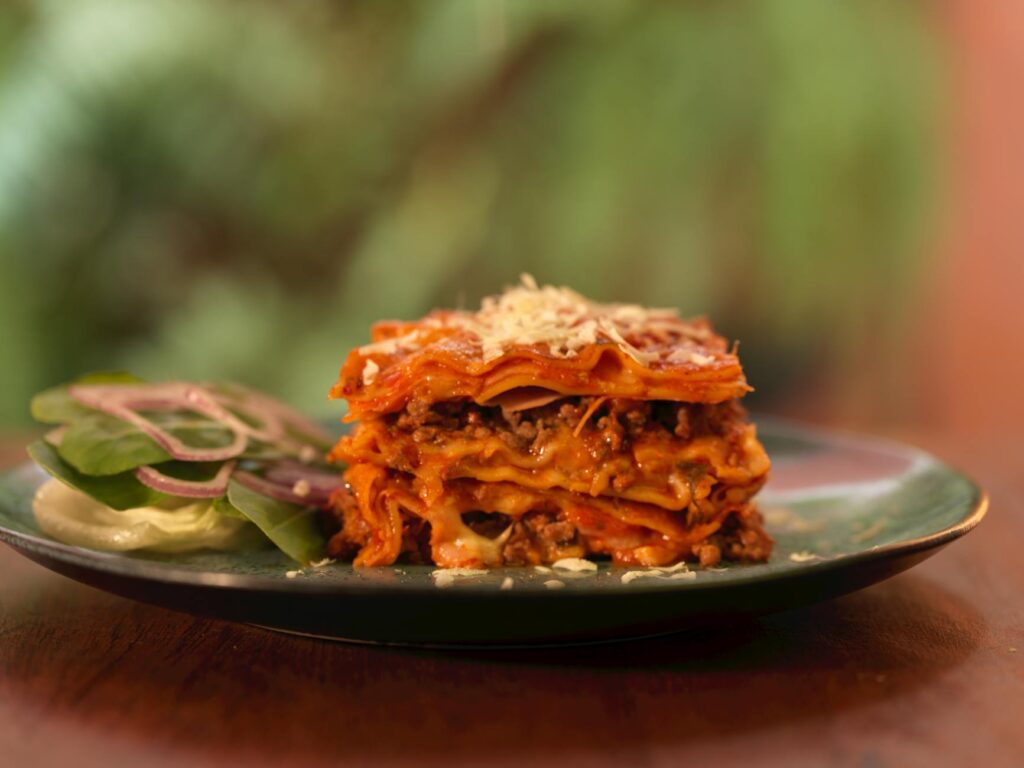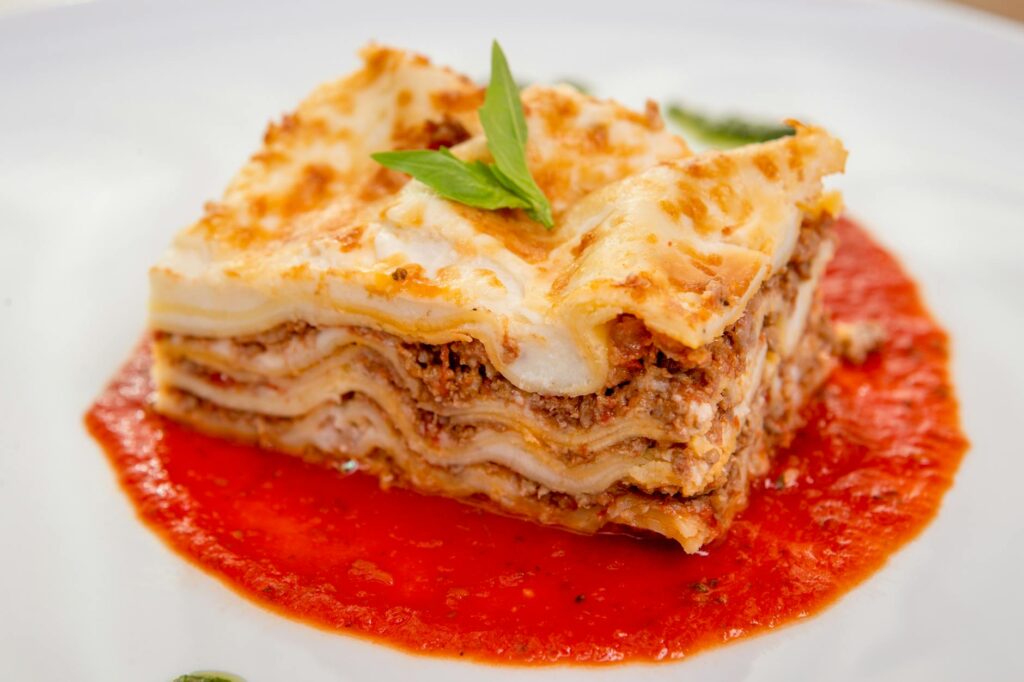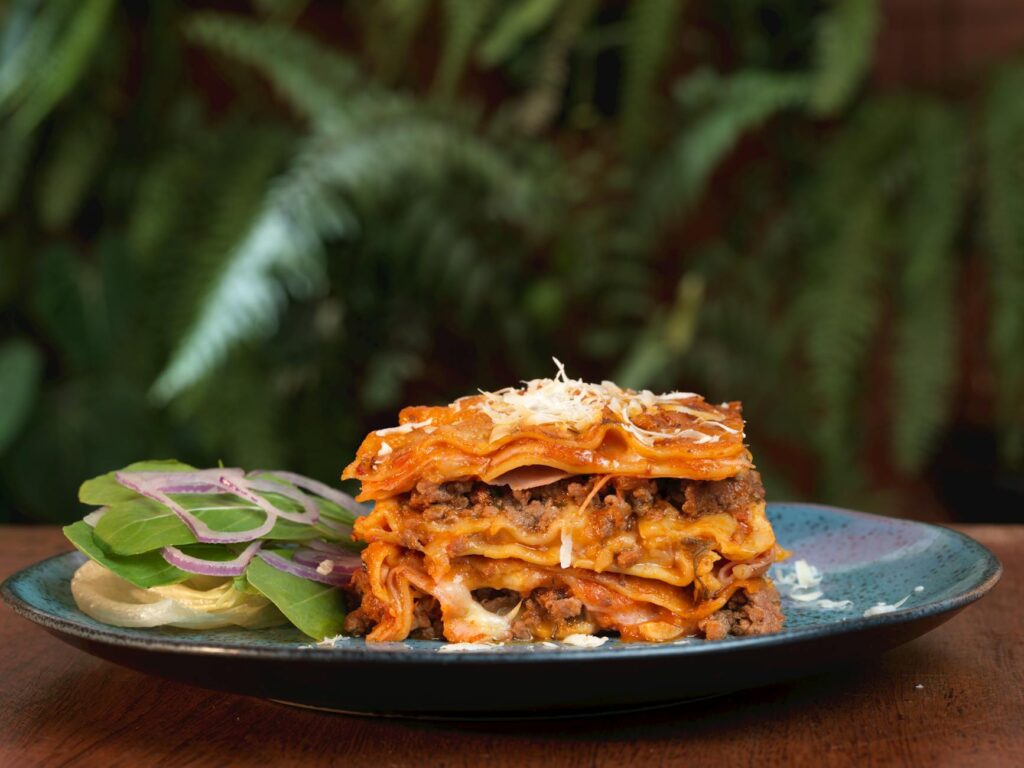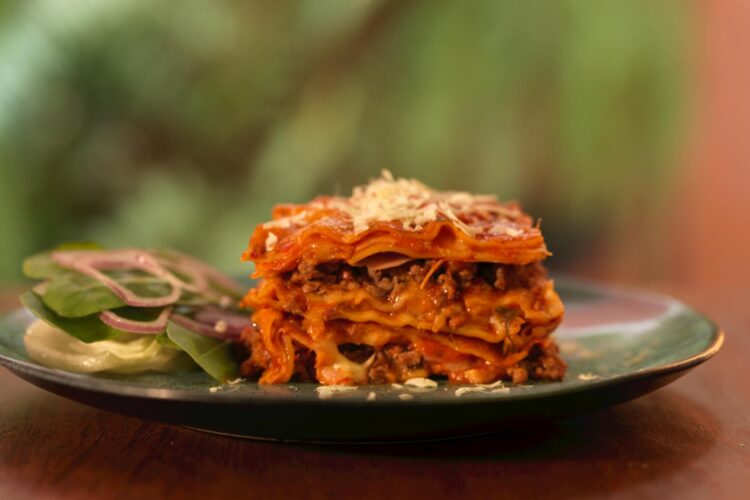Lasagna, a dish that evokes feelings of warmth, comfort, and pure culinary satisfaction. This classic Italian bake is more than just a meal; it’s an experience, a journey through layers of pasta, meat sauce, and cheese, culminating in a symphony of flavors and textures baked to perfection. Let’s delve into the art of crafting the perfect lasagna.
A Quick History of Lasagna
While the exact origins remain debated, lasagna’s roots trace back to ancient Greece, evolving through centuries of culinary innovation. The dish as we know it today, with its signature layers, solidified in Naples during the Middle Ages. Many variations have appeared over the centuries, reflecting regional preferences and ingredient availability. For a deeper dive into the fascinating history, check out this excellent resource on the history of Italian cuisine.
The Foundation: The Meat Sauce
The heart of any great lasagna lies in its rich and flavorful meat sauce. A slow-simmered ragu, traditionally made with ground beef, pork, and tomatoes, forms the base of this culinary masterpiece. Don’t be afraid to experiment! Adding vegetables like carrots, celery, and onions adds depth and complexity. For a richer sauce, you might consider using a blend of different meats or even substituting with a vegetarian alternative.  For a fool-proof recipe, consider checking out this amazing meat sauce recipe.
For a fool-proof recipe, consider checking out this amazing meat sauce recipe.
The Pasta: A Foundation for Flavor
Choosing the right pasta is paramount. While oven-ready lasagna noodles offer convenience, the classic approach involves pre-boiling wider noodles like those specifically designed for lasagna. Ensure that your noodles are cooked al dente, as they will continue to cook in the oven. Overcooked noodles can lead to a mushy lasagna, ruining the texture of this iconic dish. Learn more about choosing the perfect pasta for your lasagna.
Building the Layers: An Art in Itself
Layering is key to lasagna success. The process is quite simple, but mastering it leads to a perfectly balanced result. Begin with a layer of sauce, followed by a layer of pasta. Continue this pattern, alternating between sauce, cheese, and pasta until you’ve built your lasagna masterpiece. Finish with a generous layer of cheese and a sprinkle of herbs.  This is a great example of the perfect Lasagna layering technique.
This is a great example of the perfect Lasagna layering technique.
The Cheese: A Melty Crown
The cheese selection significantly impacts your lasagna’s overall flavor profile. While mozzarella is a classic and essential choice, consider experimenting with other cheeses like ricotta, parmesan, or provolone. Ricotta adds creaminess and moisture, while parmesan provides a salty, sharp bite.  For a truly authentic experience, consider using fresh, high-quality cheeses. Learn more about cheese pairings in this helpful guide.
For a truly authentic experience, consider using fresh, high-quality cheeses. Learn more about cheese pairings in this helpful guide.
Baking to Perfection: Patience is Key
Baking your lasagna requires patience. A slow and gentle bake allows the flavors to meld and the cheese to melt perfectly. Covering your lasagna with foil during the initial baking period helps retain moisture, preventing it from drying out. Remove the foil towards the end of the baking time to allow the top to brown nicely. This video shows the perfect baking technique. Once it’s baked to a beautiful golden-brown, let it rest for a few minutes before slicing and serving.
Lasagna is a testament to the power of simple ingredients transformed into a culinary masterpiece. With a little practice, and careful attention to detail, you can create a lasagna that will impress your family and friends. Enjoy!
Frequently Asked Questions
What is the best type of meat to use in lasagna? A combination of ground beef and Italian sausage is traditional, but you can experiment with different meats or even vegetarian options.
How long should I bake my lasagna? Baking time depends on the size of your lasagna and your oven, but generally, you should bake it for 45-60 minutes, or until bubbly and golden brown.
Can I make lasagna ahead of time? Yes, you can assemble the lasagna a day in advance and bake it when ready. Just cover it with plastic wrap and store it in the refrigerator.
What kind of cheese is best for lasagna? Mozzarella is a classic choice, but you can also add ricotta, parmesan, and provolone for extra flavor and texture.
What should I do if my lasagna is too dry? Adding a layer of ricotta cheese between the pasta sheets can help keep the lasagna moist.
